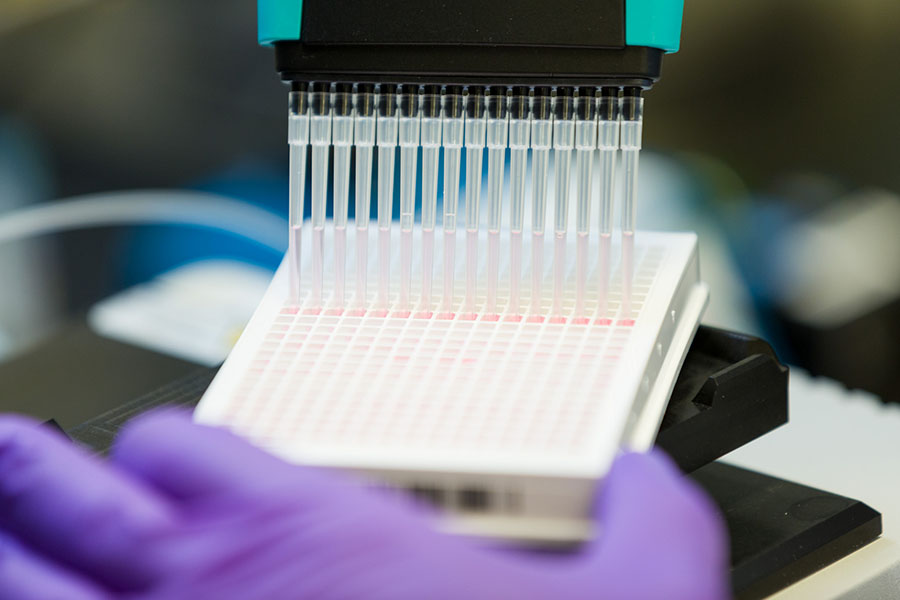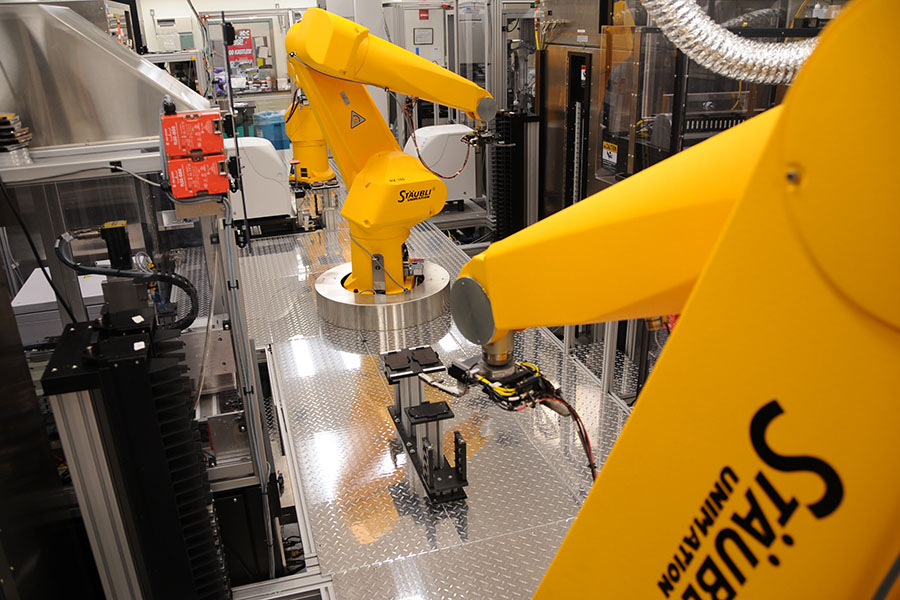Finding What’s Common Among Diseases, Seeing the Bigger Picture
Translational Science Highlight
- NCATS scientists are identifying biological commonalities among diseases and applying this knowledge of shared processes and pathways to the understanding of multiple human diseases and conditions.
To find cures for diseases, scientists traditionally study one disorder at a time. While this approach has produced a wealth of information about the characteristics of individual diseases and potential treatments, it rarely results in transformational insights that improve research efficiency and effectiveness.
Scientists at NCATS take a different approach. By working to address translational research obstacles through projects across many diseases, NCATS teams aim to learn more about what different diseases have in common. This knowledge of the bigger picture can help scientists advance the overall translational science process.
Collaborators from across the globe have engaged the scientists in NCATS’ Division of Preclinical Innovation for help tackling translational roadblocks in their research. NCATS does not initiate this research; the investigators come to NCATS for help to make their translational research more efficient and effective. For example, NCATS scientists can create probes to explore the activity of molecules and conduct high-throughput screening to find new drug candidates against a disease. Through individual projects, NCATS researchers have made connections across seemingly unrelated diseases.
Access to Specialized Expertise

An NCATS scientist prepares samples for high-throughput screening. (Daniel Soñé Photography, LLC, Photo)
NCATS offers expertise in the use of small molecules to study and advance treatments for many different types of disease. A small molecule can be used as a probe to explore the role of a protein in a disease, or the small molecule could even become a drug. Molecules from NCATS’ compound libraries are checked against a target protein to see which, if any, molecules change the protein’s activity. This process involves thousands of experiments, which are conducted by robots. When promising small molecules emerge, NCATS scientists can pursue more detailed tests to learn about their activity.
Researchers needing access to NCATS’ unique expertise and resources to address preclinical issues in their research have approached NCATS scientists to develop solutions and collect needed data. Several of these collaborations have involved projects studying neurodegenerative diseases, including Alzheimer’s, Huntington’s and Parkinson’s diseases.
“We just happened to be approached by investigators who had these neurodegenerative diseases as their focus and had these novel therapeutic hypotheses in mind,” said NCATS Scientific Director Anton Simeonov, Ph.D.
The NCATS Approach in Action
As knowledge of individual diseases grew, so did the possibility of identifying commonalities among them. In many of these disorders, nerve cells in the brain, called neurons, have trouble getting rid of their waste. As the waste builds up, the cells gradually stop working. The results can be devastating and often fatal.
“I’d been involved in a number of those projects where we thought we had the perfect molecule, but it didn’t go anywhere,” said Juan Marugan, Ph.D., group leader in the NCATS Chemical Genomics Center, who joined NIH after working in the pharmaceutical industry. “What we are looking for at NCATS is to fundamentally change the way we approach disease.”
Marugan’s work on neurodegeneration began about a decade ago, on a project with researchers interested in the enzyme glucocerebrosidase (GCase). An enzyme is a protein that drives chemical reactions in cells; for GCase, that means breaking down a specific kind of fat. But in people with a rare disorder called Gaucher disease, cells produce a form of GCase that does not fold properly. The misfolded enzyme cannot remove the waste fat, which builds up in the brain and other organs and causes damage that can be life-threatening.
For the GCase project, Marugan’s team screened a huge library of small molecules for ones that would make the enzyme fold correctly. Eventually, the researchers identified the small molecule NCGC607, which increases the activity of GCase in cells. This work could eventually lead to a drug to treat Gaucher disease that would be cheaper and easier for patients than the current invasive treatment of injections of the missing enzyme.
People with Gaucher disease also have a high risk of developing Parkinson’s disease, which affects millions of people worldwide. Increasing the activity of GCase might help fight the abnormal proteins that build up in the brains of people with Parkinson’s disease, even if they don’t have Gaucher disease.
A Broader Perspective

NCATS’ robotic platform enables high-throughput screening of small molecules.
Small molecule expertise was also the basis of a more recent neurodegeneration project on Huntington’s disease that involved other NIH and academic collaborators. Researchers at NCATS tested thousands of compounds and found that a small molecule called NCT-504 lowered the level of a key protein in diseased cells, making them more likely to survive.
The project led to a broad insight as well: The molecule did not interact with the toxic protein directly. Instead, it worked by turning up the cell’s “recycling” system. Normally, cells use enzymes to break down large molecules like proteins and fats that the cells no longer need and use the components to make new molecules. But sometimes cells lose the ability to carry out their normal recycling processes, and the waste products pile up. Since waste products build up in many neurodegenerative disorders, the findings could lead to new treatments for conditions beyond Huntington’s disease.
NCATS researchers have also found a small molecule that improves muscle function in the rare muscle disease Duchenne muscular dystrophy and studied fat buildup in the rare disease Niemann-Pick type C1 (NPC1). A small molecule involved in NPC1 has been licensed to a pharmaceutical company for further development and is being tested in humans now, showing promising results.
In addition to projects on neurodegenerative diseases, NCATS scientists have projects focusing on the functioning of mitochondria, which are the structures in cells that make energy, and on how cancer cells make energy. Each area could be relevant to dozens of diseases.
“If you can understand the basic principles of how a particular molecular problem leads to a particular disease, you can inform translation in ways that can lead to treatments for multiple diseases,” Simeonov said.
Posted July 2018


